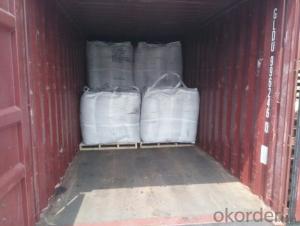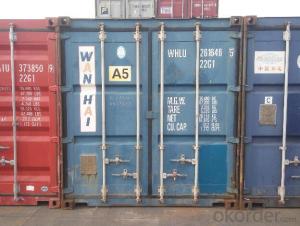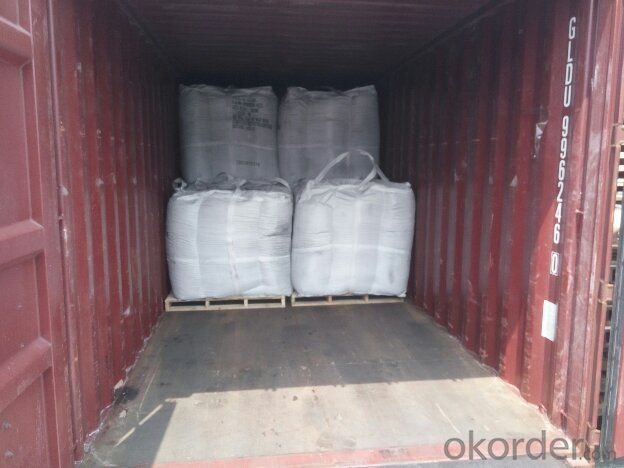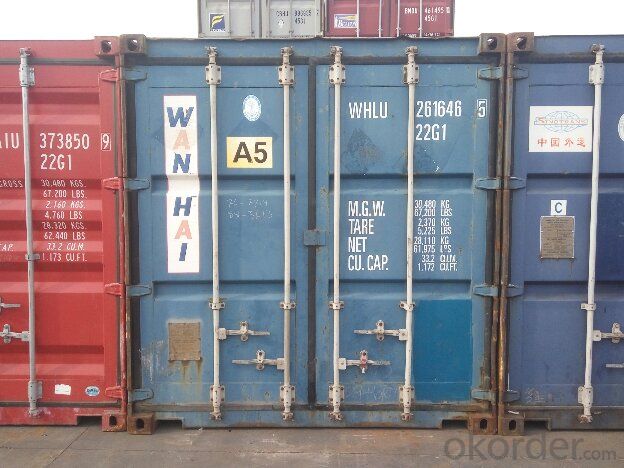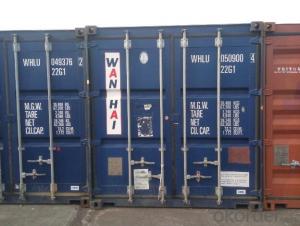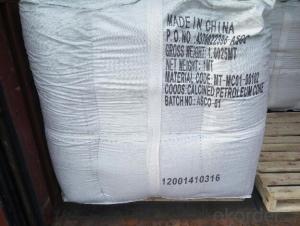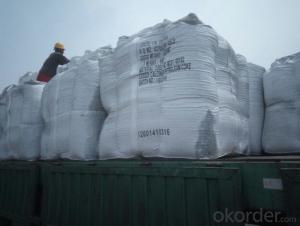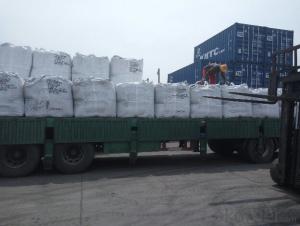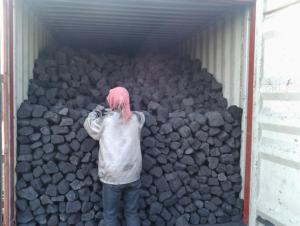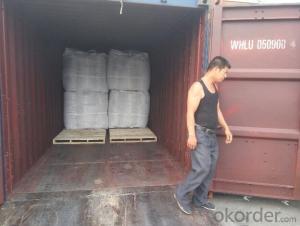10% Ash Foundry Coke used in Foundry Plant in Shandong
- Loading Port:
- Tianjin
- Payment Terms:
- TT OR LC
- Min Order Qty:
- 20.2
- Supply Capability:
- 1002 m.t./month
OKorder Service Pledge
OKorder Financial Service
You Might Also Like
Brief Introduction
Foundry Coke is the main fuel of melting iron in the oven. It can melt the materials in the over, make the iron reach great heat, and keep good air permeability by sustain stock column. Thus, the foundry coke should have the characteristics of big block, low reactivity, small porocity, enough anti-crush strengh, low ash and low sulphur.
The coke handled by our cooperation is made from superior coking coal of Shanxi province. Provided with the advantages of low ash, low sulphur and high carbon. Our coke is well sold in European, American, Japanese and South-east Asian markets. Our owned Coke plant are located in Shanxi Province and supplying of you many kinds of coke. it is more and more popular in the world
we supply Foundry Coke long-term, its characteristic is best strength, low sulfur and phosphorus,thermal stability.
Specifications:
ASH % | 8% max | 10% max | 12% max |
V.M.% MAX | 1.5% max | 1.5% max | 2% max |
SULFUR % | 0.65% max | 0.65% max | 0.7% max |
MOISTURE | 5% max | 5% max | 5% max |
Size | 80mm-120mm,80-150,100-150mm, or as request | ||
Features
1. Our quality is always quite good and stable which is producing and packing according to customers' requirements.
2. Putting Client profile into first, achieved mutual benefit.
3. Good partner on business. It's a good and wise choice for customers' to purchase from us. It's our great honor to cooperate with you.
4. We can supply documents as follows:
- bill of loading,
-Invoice,
-Packing List
-Insurance
-standard inspection pictures of the container as specified by INSPECTORATE
-or more requested by buyer.
Pictures

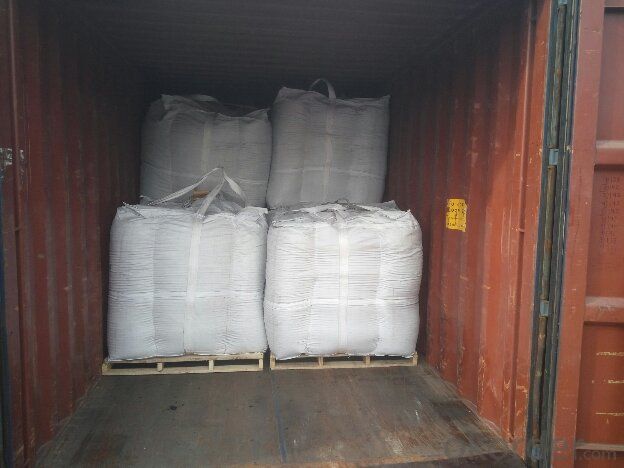
FAQ
1. What is the packing?
In 25kg bag/ In jumbo bags without pallet/ Two jumbo bags with one pallet/ or as customers’ request
2. What is the production capacity?
10 thousand tons per month
3 What is payment term?
Irrevocable LC at sight/ 20% down payment by T/T and 80% against BL copy byT/T/ or to be discussed
4 What is the service?
We will send sample to the third party(CIQ, CCIC, SGS,BV or to be discussed) for checking, and present the test certificate and loading repot of shipment.
- Q: How does carbon impact the structure and function of ecosystems?
- Carbon plays a crucial role in shaping the structure and function of ecosystems. It is a fundamental building block of life and is involved in various biological processes. Carbon is the primary component of organic matter, such as plants, animals, and microorganisms, which form the basis of food webs and provide energy to other organisms. Carbon dioxide (CO2) is also an essential greenhouse gas that regulates the Earth's temperature. Through photosynthesis, plants absorb CO2 from the atmosphere and convert it into organic carbon compounds, releasing oxygen as a byproduct. This process not only fuels the growth of plants but also maintains the balance of atmospheric gases, supporting life on Earth. Additionally, carbon influences the cycling of nutrients within ecosystems. Decomposition of organic matter by decomposers releases carbon back into the environment, enabling its reuse by other organisms. This carbon cycling is vital for nutrient availability and contributes to the overall productivity of ecosystems. However, human activities, such as burning fossil fuels and deforestation, have significantly increased carbon dioxide levels in the atmosphere. This excess carbon disrupts the natural balance, leading to climate change and its associated impacts on ecosystems. Rising temperatures, altered precipitation patterns, and ocean acidification are some of the consequences of increased carbon emissions, which can negatively affect the structure and function of ecosystems, including biodiversity loss, habitat degradation, and disrupted ecological interactions. In summary, carbon is essential for the structure and function of ecosystems. Its involvement in energy transfer, nutrient cycling, and climate regulation highlights its significance in maintaining ecological balance. However, the excessive release of carbon dioxide by human activities has detrimental effects on ecosystems, emphasizing the need for sustainable practices to mitigate these impacts.
- Q: What are the impacts of carbon emissions on glacier retreat?
- The impacts of carbon emissions on glacier retreat are significant and alarming. As carbon dioxide and other greenhouse gases are released into the atmosphere, they trap heat and contribute to global warming. This rise in temperature directly affects glaciers by accelerating their melting and retreat. Glaciers act as natural reservoirs of freshwater, and their retreat has severe consequences for water availability, ecosystems, and human populations that depend on them. Additionally, the melting of glaciers contributes to rising sea levels, which poses a threat to coastal communities. Overall, carbon emissions play a major role in driving glacier retreat and exacerbating the impacts of climate change.
- Q: Where do I buy DNF premium advanced carbon?
- Before in the mall to buy, now advanced has been officially cancelled only in the network, the old machine and rock strengthening reinforcement, carbon furnace has been canceled, now can only rely on colorless strengthening, but to strengthen and improve the success rate of the previous 10 carbon furnace rock will burst, now with a colorless hundred won't burst. So please accept, quack quack!
- Q: How about carbon content of coal ash?
- 5. Fill in the records and present the report of the measurement result.6, in order to measure the accurate data, a sample should be tested in parallel with three crucibles at the same time, and the average of the results should be taken at last.
- Q: What is carbon steel, carbon manganese steel?
- Carbon manganese steel is a high-quality carbon structural steel in the higher manganese content of carbon steel, manganese elements are generally marked in the rear, such as 20Mn, 40Mn and so on
- Q: How does carbon impact ocean acidity?
- Ocean acidification is caused by carbon, which impacts the acidity of the ocean. When seawater absorbs carbon dioxide (CO2) from the atmosphere, it reacts with water molecules and forms carbonic acid. This process lowers the pH levels of the ocean, making it more acidic. Human activities, including burning fossil fuels, deforestation, and industrial processes, are the primary sources of carbon dioxide in the atmosphere. As these activities increase the concentration of CO2 in the atmosphere, more of it is absorbed by the oceans. The increase in acidity has negative effects on marine life. Organisms with calcium carbonate shells, such as coral reefs, shellfish, and some plankton species, are particularly vulnerable to ocean acidification. The higher acidity makes it difficult for these organisms to build and maintain their shells, resulting in reduced growth rates and increased mortality. Ocean acidification also disrupts the entire marine food web. It upsets the balance between predators and prey, as some plankton species struggle to develop and survive in acidic conditions. This can have a ripple effect on the entire ecosystem, affecting fish populations, marine mammals, and even humans who rely on seafood for sustenance. Furthermore, ocean acidification has significant economic consequences. Industries like commercial fisheries and tourism, which depend on healthy marine ecosystems, can suffer from the decline in fish populations and the degradation of coral reefs. To mitigate the impacts of carbon on ocean acidity, it is crucial to reduce carbon dioxide emissions and shift towards cleaner and more sustainable energy sources. Measures like creating marine protected areas and implementing sustainable fishing practices can also help protect and restore marine ecosystems, thereby mitigating the effects of ocean acidification.
- Q: What are the consequences of increased carbon emissions on tourism industry?
- Increased carbon emissions have significant consequences on the tourism industry. One of the most prominent effects is the deterioration of natural landscapes and ecosystems that attract tourists. Carbon emissions contribute to global warming, resulting in rising temperatures, melting glaciers, and increased instances of extreme weather events like hurricanes and droughts. These environmental changes can lead to the destruction of iconic landmarks, such as coral reefs or national parks, which are often the main attractions for tourists. Furthermore, increased carbon emissions contribute to air pollution, which can negatively impact air quality in popular tourist destinations. Poor air quality can lead to respiratory issues and other health problems for both tourists and local populations, making these places less desirable to visit. Additionally, the degradation of natural environments due to carbon emissions can also affect wildlife, leading to a decline in biodiversity. This loss of wildlife can reduce the appeal of ecotourism destinations, which heavily rely on the presence of diverse flora and fauna. Moreover, the tourism industry heavily relies on transportation, which is a significant source of carbon emissions. The use of fossil fuels in planes, ships, and cars contributes to the overall carbon footprint of the industry. As countries strive to reduce their carbon emissions, they may impose stricter regulations or taxes on air travel, making it more expensive and less accessible for travelers. This can impact the number of tourists visiting different destinations and hinder the growth of the tourism industry. Lastly, the consequences of increased carbon emissions extend beyond environmental factors. Climate change and extreme weather events can disrupt travel plans, leading to cancellations and financial losses for both tourists and businesses in the tourism industry. Moreover, destinations that heavily rely on winter tourism, such as ski resorts, may face challenges due to shorter snow seasons or inconsistent snowfall patterns caused by climate change. In conclusion, increased carbon emissions have severe consequences on the tourism industry. From the degradation of natural landscapes and ecosystems to the impact on air quality and wildlife, the effects of carbon emissions can deter tourists from visiting certain destinations. Additionally, the reliance of the tourism industry on transportation contributes to its overall carbon footprint, potentially leading to increased costs and reduced accessibility for travelers. Climate change-related disruptions and financial losses further compound the challenges faced by the tourism industry.
- Q: What is the concept of carbon neutrality?
- Carbon neutrality is the goal of achieving a balance between the release of carbon dioxide emissions into the atmosphere and their removal. It is an approach to combat climate change and reduce greenhouse gas emissions by offsetting the carbon footprint of individuals, organizations, or even entire countries. To achieve carbon neutrality, the first step is to measure and understand the amount of carbon dioxide emissions being generated. This involves assessing emissions from different sources like energy production, transportation, agriculture, and industrial processes. Once the emissions are quantified, efforts are made to reduce them through energy efficiency, transitioning to renewable energy sources, and adopting sustainable practices. However, it is not always possible to completely eliminate all emissions. In such cases, carbon offset projects are used to neutralize the remaining emissions. These projects involve activities that remove carbon dioxide from the atmosphere, such as reforestation, afforestation, or investing in renewable energy projects. By supporting these initiatives, carbon neutrality can be achieved by balancing the emissions produced with carbon removal or reduction efforts. The concept of carbon neutrality is crucial in the fight against climate change as it recognizes the responsibility of individuals, organizations, and governments to take action and reduce their environmental impact. By striving for carbon neutrality, we can effectively contribute to mitigating climate change and creating a more sustainable future.
- Q: How is carbon used in the production of construction materials?
- Carbon is used in the production of construction materials in several ways. One of the most common applications is in the production of steel, which is a vital material in the construction industry. Carbon is a key component in the iron and steel-making process, as it is combined with iron to create a stronger and more durable material. The addition of carbon to iron forms a compound known as steel, which has excellent structural properties and can be used to construct various components of buildings, such as beams, columns, and reinforcement bars. Additionally, carbon fibers are increasingly being used in the production of construction materials. Carbon fibers are lightweight, yet incredibly strong and stiff, making them ideal for reinforcing concrete and other materials. When carbon fibers are added to concrete, they enhance its strength and durability by reducing cracking and improving its resistance to impact and corrosion. This allows for the construction of structures that are more resilient and longer-lasting. Furthermore, carbon is used in the production of composite materials, which are becoming popular in construction. Carbon composites are made by combining carbon fibers with a polymer matrix, resulting in a material that is lightweight, yet strong and rigid. These composites are used in various construction applications, such as building panels, roofing, and bridges, as they offer high strength-to-weight ratios and excellent resistance to environmental factors. In summary, carbon plays a crucial role in the production of construction materials. It is used in the creation of steel, which is a fundamental component of buildings, and its fibers are employed to reinforce concrete and other materials. Additionally, carbon composites provide lightweight and high-strength solutions for construction applications. By harnessing the properties of carbon, construction materials can be made stronger, more durable, and more sustainable.
- Q: What are the main sources of carbon emissions?
- The main sources of carbon emissions include burning fossil fuels such as coal, oil, and natural gas for electricity, transportation, and industrial processes. Deforestation and land-use changes also contribute to carbon emissions by releasing stored carbon into the atmosphere.
Send your message to us
10% Ash Foundry Coke used in Foundry Plant in Shandong
- Loading Port:
- Tianjin
- Payment Terms:
- TT OR LC
- Min Order Qty:
- 20.2
- Supply Capability:
- 1002 m.t./month
OKorder Service Pledge
OKorder Financial Service
Similar products
Hot products
Hot Searches
Related keywords
